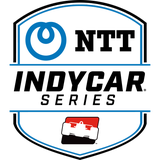
INDYCAR increases horsepower in push-to-pass for 2016

INDIANAPOLIS - Ask any driver that regularly competes in the Verizon IndyCar Series what they would like to have and the answer is usually "more horsepower." The drivers of the Verizon IndyCar Series got an early Christmas present when INDYCAR announced an increase in horsepower for the "Push-to-Pass" function for the 2016 season. Drivers have wanted more horsepower to make the overtaking assist mechanism on the Honda and Chevrolet engines more of a tool in the races on the streets and road courses. Push to pass is not used on the ovals.
INDYCAR announced that turbocharger boost pressure during push-to-pass use will increase from 160 kilopascals (kPa) in 2015 to 165 kPa, equating to a gain of approximately 20 horsepower in the Chevrolet and Honda 2.2-liter, twin-turbocharged V-6 engines. Normal boost pressure on road and street courses - before the overtake assist is engaged - remains at 150 kPa in 2016.
"The Verizon IndyCar Series already boasts some of the most exciting racing anywhere," said Jay Frye, INDYCAR President of Competition and Operations. "This technological update is part of INDYCAR's ongoing initiative to enhance the overall level of competition and excitement even more. Increasing the available push-to-pass horsepower will make the system more robust and lead to additional overtaking opportunities on road and street circuits."
Also, the series announced approximately 60 added horsepower will now be available for push-to-pass activations during the 11 road- and street-course races in 2016, nearly doubling the on-track effect for passing over 2015.
The number of pushes available and duration of each - will remain the same as in 2015.
According to Marvin Riley, INDYCAR Director of Engine Development, the push-to-pass boost pressure increase coincides with other 2016 engine updates through homologation, which include the cylinder head ports and combustion chamber, fuel injectors, camshafts, pistons and connecting rods.
"These updates are part of continued open development in the manufacturer competition between Chevrolet and Honda," Riley said, "but are also needed for performance and durability when you increase the peak power of an engine."
Teams in the series are expected to begin offseason testing once the Aero Kit updates for 2016 are released. But one team is currently testing this week at Sebring International Raceway. Dale Coyne Racing and recently announced driver Conor Daly tested Dec. 14 and Dec. 15 at the famed airport road course in Central Florida.
